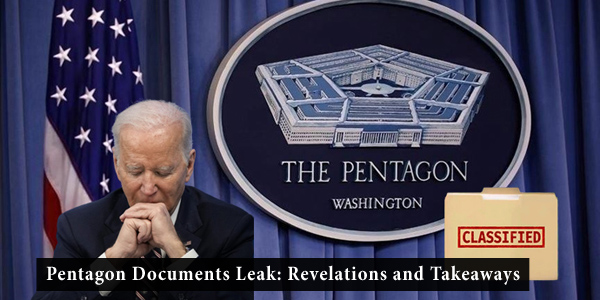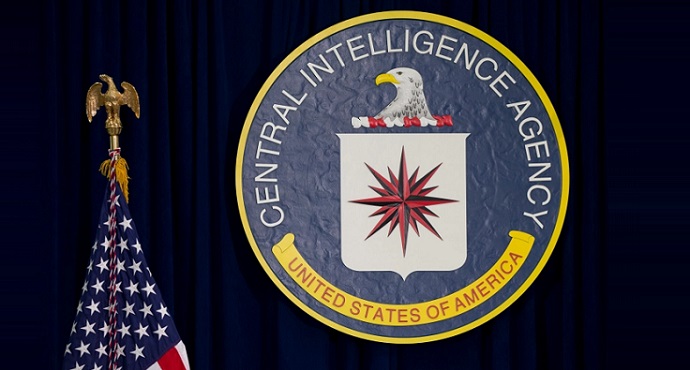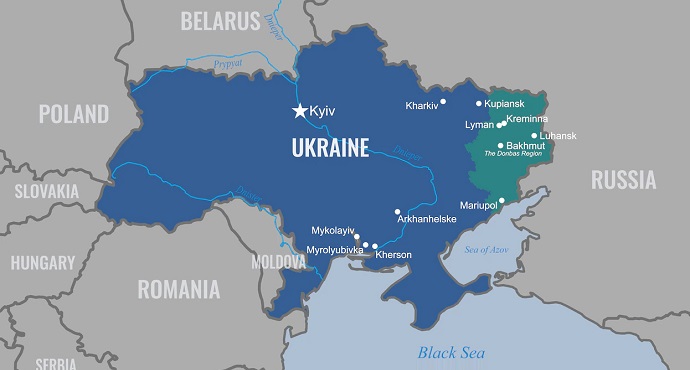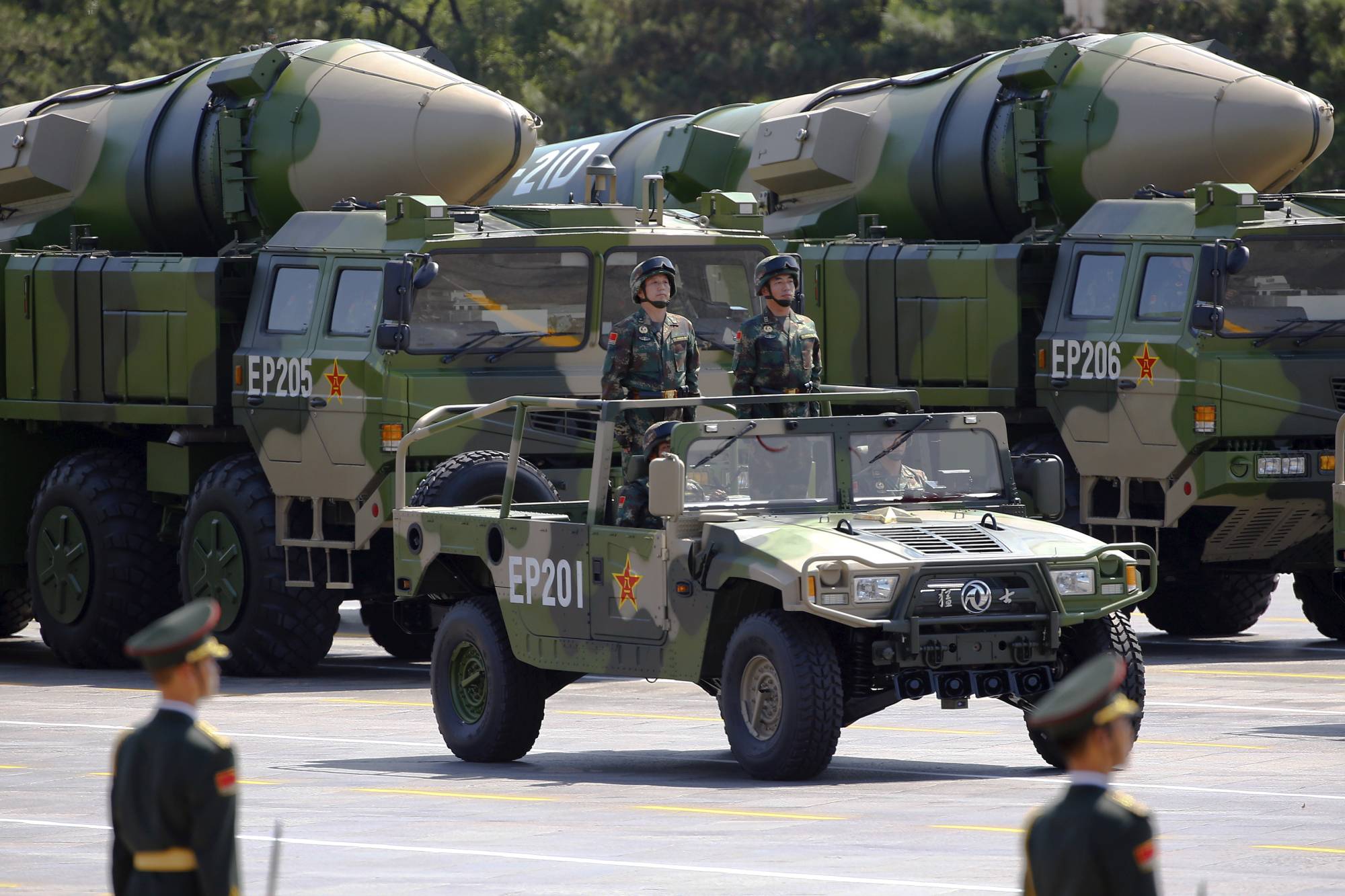Pentagon Documents Leak: Here are the biggest Revelations and Takeaways
IRIA Staff - April 15, 2023

Hundreds of classified Pentagon documents have been leaked in one of the most significant intelligence breaches of U.S. intelligence in decades, prompting a national security investigation in the United States.
Pentagon’s secret document leak exposed sensitive information on American espionage methods, and the damning evidence of U.S. spying on both its allies and adversaries. The files contain classified information related to the Russia-Ukraine war, critical details about Ukraine’s war plans, and the U.S. intelligence-gathering methods against Russia. It also revealed the presence of 97 NATO special forces personnel in Ukraine.
The Biden administration is currently working to assess and contain the fallout from the leaked documents, which have caused significant concern among U.S. officials, members of Congress, and U.S. allies. The U.S. Department of Defense is in full damage-control mode, urgently trying to identify the contents of the leaked documents. A top Pentagon spokesman said the documents present a “very serious risk to national security”.
What happened and how many documents were leaked?
The total number of leaked files is not clear but recent reports suggest approximately 300 images, as well as text posts, of the documents. However, only a portion of it has been made public.
Many of the documents, labeled “top secret”, were apparently prepared for Joint Chiefs Chairman Gen. Mark Milley and other senior leaders, but anyone with high-security clearance could access them. Some of the circulating papers may have been reportedly doctored but only after they were leaked.
 United States Central Intelligence Agency seal with the U.S. flag (Image Credit: Carolyn Kaster/AP)
United States Central Intelligence Agency seal with the U.S. flag (Image Credit: Carolyn Kaster/AP)
The documents and slides were mostly prepared in February and March, based on intel collected by the National Security Agency (NSA), CIA, Defense Intelligence Agency, DEA, and National Reconnaissance Office which manages U.S. spy satellites.
Are the documents real? The Pentagon has not verified the authenticity of the photographed documents but said that they “appear to contain sensitive and highly classified material” similar in format to those used to provide daily and intelligence updates.
How were the documents leaked? The documents, some cleared for sharing with allies and others marked for U.S. eyes only were first reported by New York Times in early April. However, the Pentagon secret files first appeared in early March on Discord, a messaging platform popular with gamers, according to Bellingcat, a Netherlands-based open-source intelligence group. The documents gained widespread global attention after appearing on Twitter, Telegram, and 4chan as well as leading global media publications.
Who leaked it? Although the investigation is still continuing, U.S federal investigators have arrested a 21-year-old air national guardsman from Massachusetts whom they say has been linked to the leaked files. The suspect identified as Jack Teixeira was arrested in connection to “unauthorized removal, retention and transmission of classified national defense information”.
Revelations
The top-secret files reveal closely held information about U.S. operations and intelligence networking, the Russia-Ukraine war, and also mention China, the Middle East, and Africa among other disclosures. Some documents are marked “NOFORN” meaning they must not be shared with foreign nationals.
 A map of Ukraine by the U.S. Department of Defense presentation. (Image Credit: DoD)
A map of Ukraine by the U.S. Department of Defense presentation. (Image Credit: DoD)
Here are some of the key alleged revelations regarding friends and foes of the U.S. in the trove:
• Ukraine — The leaked documents primarily discuss Ukraine’s military strength and expose its weak spots and vulnerabilities in Ukrainian air defenses. It includes a variety of maps illustrating Ukrainian and Russian positions.
The Pentagon papers also suggested that Ukraine may run out of air defense systems by May. One of the reports, dated February 23, provides a detailed account of the possible depletion of Ukraine’s Soviet-era S-300 air defense systems by May 2 at the current usage rate. Another “top secret” report from early February offers a bleak assessment of Ukraine’s planned spring counteroffensive, warning it is likely to result in “modest territorial gains” that are short of Kyiv’s original goals.
While Ukrainian officials have publicly downplayed the leaks, privately some have expressed anger over information shared with the United States now in the public domain. The disclosure may also intelligence sharing between Ukraine and the United States.
• Russia — The secret material on social media platforms outlines how deeply the U.S. intelligence community has infiltrated the Russian security and intelligence services. It also included information about Russia’s forces in Ukraine, which the U.S. obtained through intelligence gathering. Some documents contain daily real-time warnings on the timing of Moscow’s strikes and that the U.S. has been able to warn Ukraine of impending attacks.
 A T-72B1 Tank of the Armed Forces of Ukraine in Donbas on December 2020. (Image Credit: Ukrainian Joint Forces Operation)
A T-72B1 Tank of the Armed Forces of Ukraine in Donbas on December 2020. (Image Credit: Ukrainian Joint Forces Operation)
The Pentagon documents also revealed the degree to which the U.S. has gained access to the internal plans of Russia’s Wagner Group, a private military contractor, largely through intercepted communications and human sources, which could now be cut off or put in danger.
The papers also showed infighting between the Federal Security Service (FSB) and Defense Ministry over Russia’s casualty count for the war in Ukraine.
• South Korea — The files showed that South Korea was torn between Washington’s pressure to help supply ammunition to Ukraine and its official policy of not providing lethal weapons to countries at war. The American ally feared that President Biden would call President Yoon Suk Yeol directly to press the matter. The document suggests that U.S. and South Korea can go around the policy by involving Poland in a deal with South Korea and supplying Poland’s weapons to Ukraine.
• Israel — Another document, marked “Top Secret”, claims that the Mossad intelligence agency was encouraging protests against Israeli prime minister Benjamin Netanyahu’s proposed judicial reforms. Israel has refused the allegations. Meanwhile, the U.S. has reassured Israeli officials that Washington is committed to its security relationship with Israel and Pentagon officials have urged their counterparts in the Israeli defense ministry to not overreact.
Another file titled “Israel: Pathways to Providing Lethal Aid to Ukraine” suggested that Israel “likely will consider providing lethal aid under increased US pressure or a perceived degradation” in its relationship with Russia. The Israeli weapons that could be transferred to Ukraine, include Barak-8 and Spyder surface-to-air missiles and Spike anti-tank guided missile, according to document.
 U.S. Secretary of Defense Lloyd J. Austin III (left) meets with Israeli Prime Minister Benjamin Netanyahu in Tel Aviv to discuss regional security, opportunities to expand military cooperation, and escalating violence in the West Bank, on March 9, 2023. (Image Credit: U.S. Navy Petty Officer 2nd Class Alexander Kubitza)
U.S. Secretary of Defense Lloyd J. Austin III (left) meets with Israeli Prime Minister Benjamin Netanyahu in Tel Aviv to discuss regional security, opportunities to expand military cooperation, and escalating violence in the West Bank, on March 9, 2023. (Image Credit: U.S. Navy Petty Officer 2nd Class Alexander Kubitza)
• Egypt — Another bombshell revelation from the leaked documents that Egypt, a key U.S. ally in the Middle East region, was secretly planning to support Russia. Egypt’s President Abdel Fattah el-Sisi discussed a plan to supply Russia with 40,000 rockets, according to one classified paper. However, Egyptian officials have denied the reports, saying Cairo was maintaining “noninvolvement in this crisis.”
• Serbia — Another revelation is about Serbia, a country widely regarded as pro-Russian. The country which has remained neutral in the Ukraine conflict had appeared to supply weapons to Kyiv, according to a document. However, the Serbian government has denied the claims, saying it has not sold weapons to Ukraine nor plans to do so.
• Iran — Another revelation was about Iran, which has long been a top target for U.S. espionage. The leaked documents suggest that U.S. agencies routinely monitor some of Iran’s secret weapons activity. One report with a top-secret label described private discussions between two Iranian officials over their strategy about the visit by International Atomic Energy Agency (IAEA) chief Rafael Grossi to Iran in March. A separate document described preparations by Iran for a space launch.
• China — The documents related to China unveil that the U.S. has been closely monitoring China’s weapons development and naval activity. One report detailed the February 25 test of China’s one of its advanced experimental missiles — the DF-27 hypersonic glide vehicle. The Pentagon files also analyzed the risks of Beijing’s willingness to send lethal aid to Russia.
 Military vehicles carrying DF-21D ballistic missiles roll to Tiananmen Square during a military parade in Beijing, China. (Image Credit: Damir Sagolj/Reuters)
Military vehicles carrying DF-21D ballistic missiles roll to Tiananmen Square during a military parade in Beijing, China. (Image Credit: Damir Sagolj/Reuters)
Another discussion was about China’s negotiations in 2022 with Nicaragua’s government for the development of a deep-sea port. China “has no stated aspirations” for military access in Nicaragua but the document said the Nicaraguan government “probably would consider offering Beijing naval access in exchange for economic investment.”
Impact of Pentagon Leaks
The release of classified documents has not only caused embarrassment for the Pentagon but has also raised concerns among American officials about the potential negative impact on U.S. operations worldwide.
Spying on allies — The leaked documents have created an embarrassing situation for U.S. President Joe Biden and his administration internationally by exposing that the U.S. has been spying on some of its closest allies, including South Korea, Israel, and Ukraine.
The eavesdropping on conversations between senior South Korean officials has led to a political backlash in Seoul, where opposition lawmakers called it “a clear violation of our sovereignty by the United States and a super-scale security breach.”
Following the criticism, U.S. officials began “engaging with allies and partners at high levels” over the leaked documents, to reassure them of the U.S. “commitment to safeguarding intelligence,” State Department spokesperson Vedant Patel said.
Investigations getting close — President Biden stated that the investigation into the leak of classified documents is “getting close” to a resolution. Biden also downplayed the consequences of the leaked information. Meanwhile, Defense Secretary Lloyd Austin said that the U.S. “will continue to investigate and turn over every rock until we find the source of this and the extent of it.”
 Federal authorities arrested Jack Teixeira, a 21-year-old Air National Guardsman, who they believe is linked to a trove of leaked classified U.S. intelligence documents. (Image Credit: AP/via New York Times)
Federal authorities arrested Jack Teixeira, a 21-year-old Air National Guardsman, who they believe is linked to a trove of leaked classified U.S. intelligence documents. (Image Credit: AP/via New York Times)
Suspect arrested — On April 13, the U.S. authorities arrested a 21-year-old air national guardsman identified as Jack Teixeira who is accused of illegally sharing classified defense information. Teixeira is reportedly the leader of a small online gaming chat group where the documents first appeared.
Note: This article was originally published on April 14 and has been updated with more details.
Regions
Issues

























